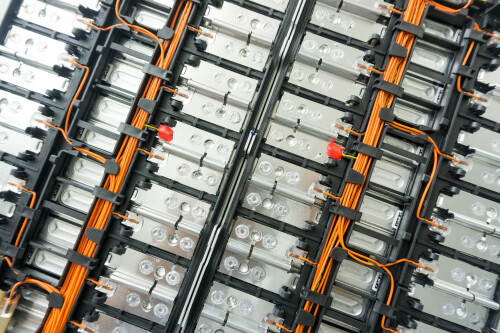
A look inside a lithium battery for cars.
Lithium batteries were already invented 40 years ago. But it is only today that the technology is beginning to show its full strengths. So what distinguishes a lithium battery from a lead battery? What advantages does it bring with it? In this article, we will explain the differences for you.
Lithium iron phosphate batteries have been widely used for almost 20 years and have even proven themselves in submarine applications.
The first iron phosphate cell was developed at the end of the 1990s. Lithium technology has been gaining more and more acceptance in many areas for years due to its numerous advantages over conventional lead-acid batteries. Long-term costs, the service life to be achieved as well as aspects such as safety and environmental compatibility (disposal) are important factors.

A look inside a lithium battery for cars.
First of all, as a powerful alternative to the conventional technology of lead batteries, lithium batteries are much lighter. This is of course a great advantage, especially when used in special purpose vehicles. Compared to lead batteries, lithium batteries can save up to 70 % in weight.
On average, no more than 50 - 60 % of the capacity of a maintenance-free lead battery should be removed (i.e. discharged). In comparison, lithium-based batteries can be discharged up to 80 % without this having a negative impact on the service life. This means that more removable energy is available for the same nominal capacity.
This refers to a phenomenon that occurs with lead batteries: the larger the consumer, the more the available capacity decreases - in other words, you receive less energy from the battery. This is a big problem, especially in the field of special purpose and commercial vehicles with powerful equipment on board. Here, the lithium battery scores, because the Peukert factor is almost zero. Thus, the full usable capacity is always available.
The internal resistance of lead batteries increases strongly with increasing charge, causing the charge current to drop further and further. As a result, lead batteries can easily take 8 - 10 hours to charge. This is a major drawback for reliable supply during unplanned operations. With lithium batteries, the charging time is much shorter. They can be fully charged to 100 % within one hour, provided that the charger is powerful enough. Forced breaks for urgently needed equipment in mobile use are therefore reduced to a minimum.
If lead batteries are stored uncharged for a longer period of time, lead sulphate crystals join together to form larger and larger deposits on the lead plates and consequently reduce the active surface, which leads to a loss of performance and eventually to a defect in the battery. Therefore, attempts are made to desulphate lead batteries. This is done by generating repeated short, strong current pulses. They are supposed to break down the sulphate crystals and restore the capacity of the batteries. In turn, additional circuits are sometimes used for this - but their effectiveness is controversial. With lithium batteries, sulphation is fortunately not an issue due to the cell chemistry. This contributes to the low maintenance of the technology.
LEAB lithium batteries always have a built-in battery management system that permanently monitors the cells and prevents over- or deep discharge. This ensures maximum battery life. Lead batteries cannot offer that. However, there are also practical solutions for this technology, such as the LEAB battery watch.
Lithium batteries only need a minimum space to store a lot of energy. The technical term for this is energy density. A lithium battery can manage up to 160 watt hours per kilo and more.
We make use of this immense advantage not only in our batteries, but also in the LPS and the Energy Unit.